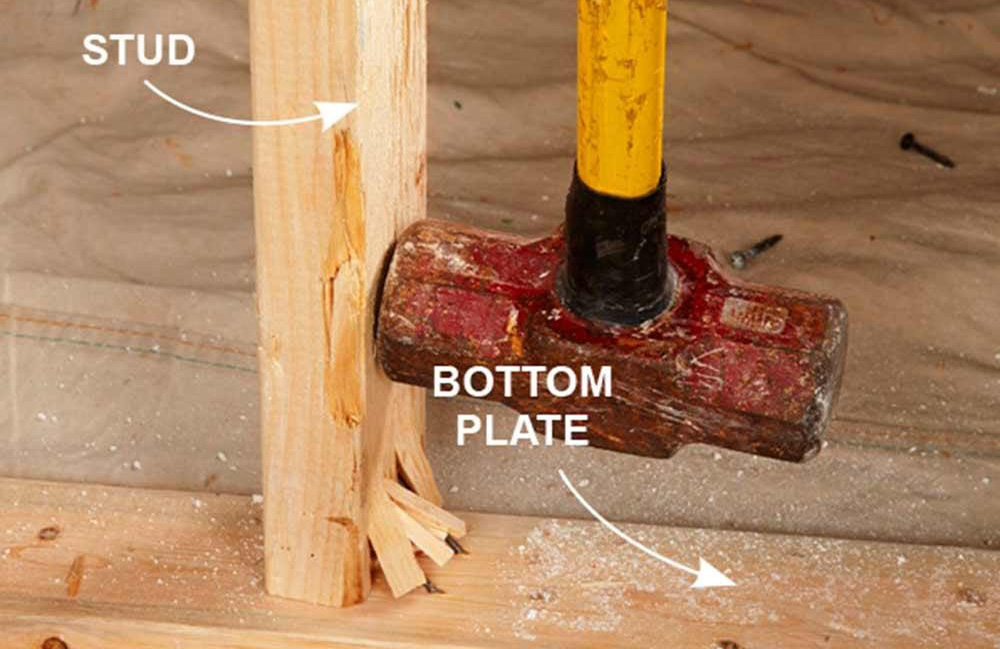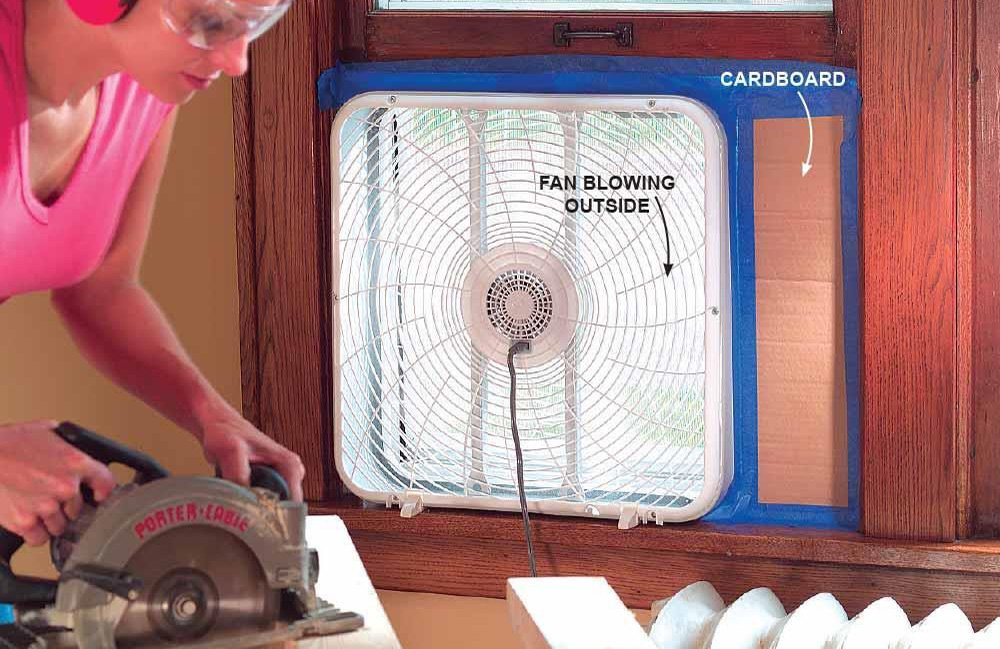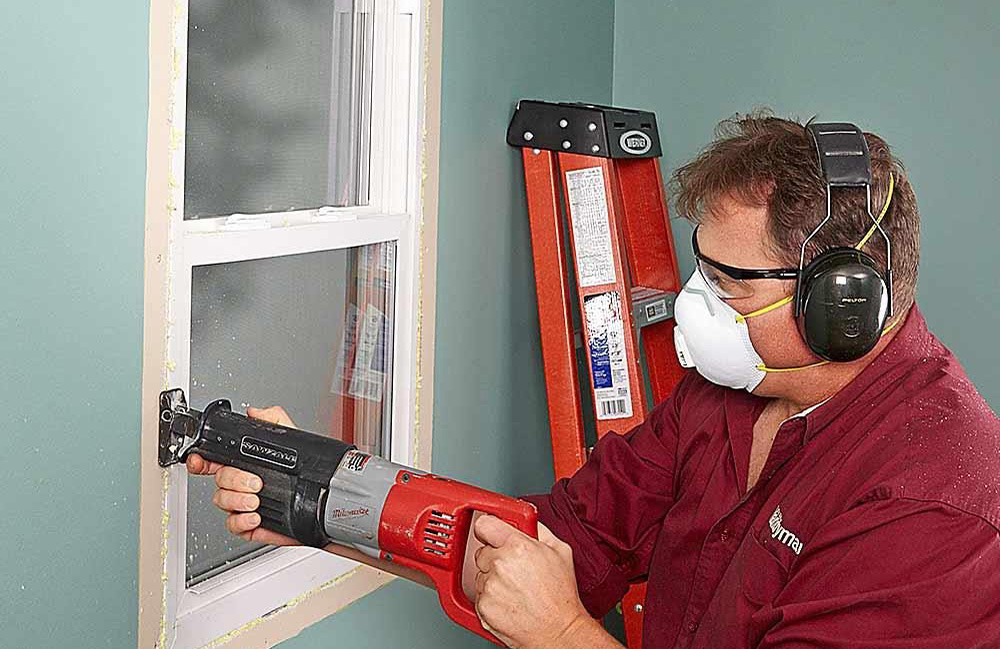Knock out studs sideways

A sledgehammer works great for busting up studs, but don’t take a whack at the middle of the studs – they’ll just wobble back and forth and probably bounce the head of the sledge right back in your direction. Hit the studs as close to the bottom plate as you can, but not so hard that you pull out the nails on the top plate – that’s a good way to catch a falling stud in the noggin. Hit the bottom of each stud just far enough to dislodge it from the nails that were holding it. Then grab hold of it and pull it off the top plate.
Pull nails with a nipper

If you’re replacing windows, doors or flooring and you want to salvage the trim, end-nipper pliers are a handy tool to pull out brads and finish nails. The rounded end provides plenty of leverage, and if the nail breaks, you can always cut it down flush. Don’t squeeze too hard when gripping the nail or you may nip it off prematurely.
Drive dust outside with a fan

A fan blowing out the window helps to keep dust levels down, and it creates a slight vacuum in the work area. That way, any gaps in your dust barrier will let air flow into the work zone, but dust-laden air can’t sneak into surrounding rooms. This works so well, in fact, that you may not even need a dust barrier for light-dust projects, like perhaps in a small kitchen demolition project. Just be sure to close large gaps around the fan with cardboard or plastic so wind gusts don’t blow the dust right back inside. For good airflow, you may have to crack open a door or window on the opposite side of the room.








